Verbo To Be (Ser/Estar)
El verbo “to be” es uno de los verbos más importantes en inglés, ya que tiene múltiples usos. En español, “to be” puede traducirse como “ser” o “estar”, dependiendo del contexto en el que se utilice. Además, el verbo “to be” tiene tres conjugaciones principales en presente simple: am, is y are. Veamos en una tabla su estructura.
Forma Afirmativa:
| Pronombres | Conjugación Completa |
|---|---|
| I | am |
| He/She/It | is |
| You/We/They | are |
Forma Negativa:
| Pronombres | Conjugación Completa |
|---|---|
| I | am not |
| He/She/It | is not |
| You/We/They | are not |
Forma Interrogativa:
| Conjugación de to be | Pronombre |
|---|---|
| Am | I…? |
| Is | he/she/it…? |
| Are | you/we/they…? |
Tabla de Formas Contraídas (Afirmativa y Negativa):
| Pronombres | Forma Contraída (Afirmativa) | Forma Contraída (Negativa) |
|---|---|---|
| I | I’m | I’m not |
| He/She/It | He’s | He’s not / He isn’t |
| You/We/They | You’re | You’re not / You aren’t |
Veamos unas oraciones de ejemplo con el verbo “to be” en forma afirmativa, negativa e interrogativa:
Forma Afirmativa:
I am a teacher. I’m a teacher. (Soy profesor/a.)
She is a student. She’s a strudent. (Ella es estudiante.)
They are in Argentina. They’re in Argentina. (Ellos están en Argentina.)
Forma Negativa:
I am not at home. I’m not at home. (No estoy en casa.)
He is not OK. He’s not OK. He isn’t OK. (Él no está bien.)
We are not students. We’re not students. We aren’t students. (Nosotros no somos estudiantes.)
Forma Interrogativa:
Am I in the right class? (¿Estoy en la clase correcta?)
Is it a rat? (¿Es una rata?)
Are you OK? (¿Estás bien?)
